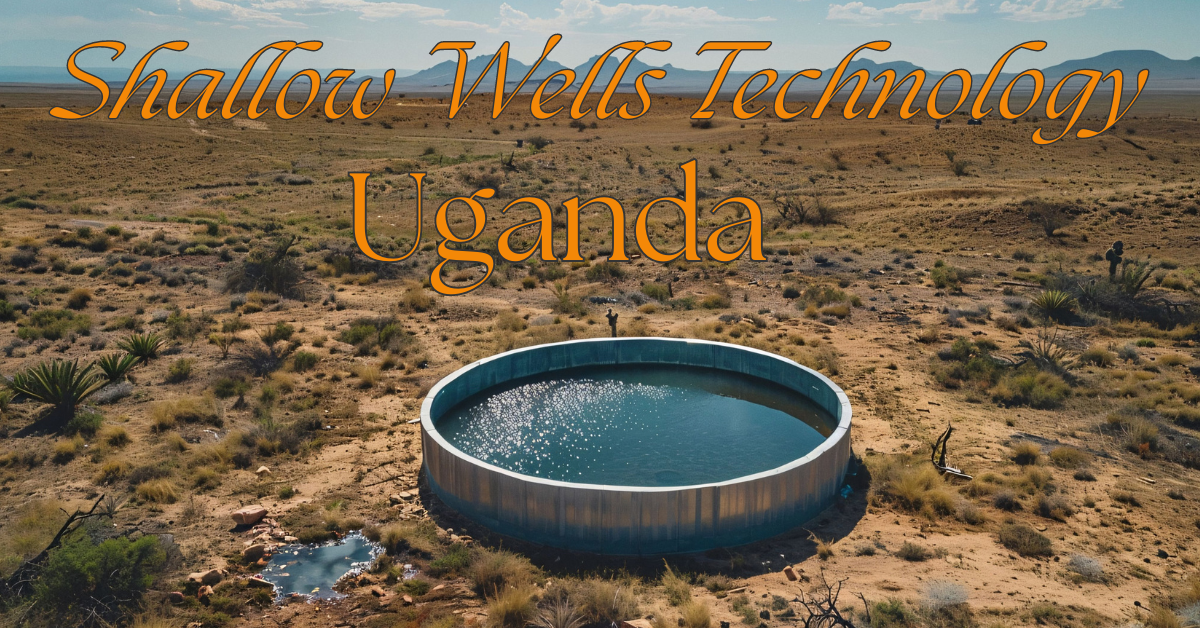Access to clean and safe drinking water is a fundamental human right and a critical component for sustainable development. In Uganda, a significant percentage of the population, especially in rural areas, lacks access to safe and reliable water sources. Shallow wells technology presents a viable solution for improving water access in these communities. This comprehensive manual serves as a guide to understanding, designing, constructing, and maintaining shallow wells in Uganda. It is aimed at stakeholders, including local communities, non-governmental organizations, government bodies, and development partners involved in water and sanitation projects.
Shallow Wells Technology Uganda
Shallow wells, also known as hand-dug wells, are a low-cost and practical solution for accessing groundwater in areas where the water table is relatively close to the surface. They are typically less than 30 meters deep and can provide a sustainable source of water if properly designed, constructed, and maintained.
Uganda is a country blessed with abundant water resources; however, geographical and socioeconomic factors limit access to these resources. Rural areas, in particular, face challenges related to water scarcity, which affects health, agriculture, and overall quality of life. Implementing shallow wells technology can help bridge the gap between water availability and access, ensuring that communities have a reliable source of clean water, because our overall health depend on drinking water.
Understanding Shallow Wells
Definition of Shallow Wells
Shallow wells are water wells dug to a depth where the water table is within reach, generally less than 30 meters. These wells can be hand-dug or machine-drilled, depending on the geology of the area and the availability of resources. Shallow wells are considered one of the simplest forms of groundwater extraction, making them ideal for rural and peri-urban communities.
Types of Shallow Wells
There are two main types of shallow wells:
- Hand-Dug Wells: Created manually using basic tools like shovels, picks, and buckets. These wells are cost-effective and can be constructed using locally available materials.
- Boreholes: Shallow boreholes are drilled using small, portable drilling rigs. They provide a more consistent water supply than hand-dug wells and are less prone to contamination.
Key Components of Shallow Wells
Key components of a shallow well include:
- Well Shaft: The vertical passage through which water is accessed.
- Well Lining: Material used to prevent the well walls from collapsing.
- Well Screen: A device fitted at the bottom of the well to filter out debris.
- Pump: A manual or motorized device used to extract water from the well.
The Need for Shallow Wells in Uganda
Water Scarcity and Its Impact on Communities
Water scarcity affects over 40% of Uganda’s rural population. Women and children often walk long distances to fetch water, affecting their health, education, and overall productivity. Shallow wells offer a closer and more reliable water source, reducing the time and effort required for water collection.
Advantages of Shallow Wells Over Other Water Sources
Shallow wells are advantageous due to their low cost, ease of construction, and ability to provide clean water close to where people live. They are also less dependent on external infrastructure, making them sustainable and community-driven solutions.
Government and NGO Initiatives for Water Access
The Ugandan government, in collaboration with NGOs, has been working to provide safe and sustainable water access through shallow wells. Various programs have been implemented to train communities on well construction, maintenance, and management.
Site Selection for Shallow Wells
Factors to Consider in Selecting a Site
Selecting the right site for a shallow well is crucial to its success. Factors to consider include:
- Proximity to the water table
- Soil and rock type
- Distance from contamination sources like latrines and waste disposal sites
Geographical and Environmental Assessments
Conducting a hydrogeological survey is essential to understand the soil type, water table depth, and potential yield of the well. This survey helps avoid areas that are prone to flooding or have a high risk of contamination.
Community Involvement in Site Selection
Engaging the community in site selection ensures that the well is located in a convenient and safe place. Community input also fosters ownership and responsibility for maintaining the well.
Designing a Shallow Well
Steps in Designing a Shallow Well
The design of a shallow well involves several steps:
- Conducting a site survey and hydrogeological assessment
- Determining the optimal depth and diameter of the well
- Selecting materials for lining, screening, and pumping
Tools and Materials Needed
Common tools and materials include shovels, picks, buckets, concrete rings for lining, well screens, and pumps. These materials should be locally available to reduce costs and ease maintenance.
Safety Considerations During Design
Safety is paramount when designing and constructing a shallow well. Proper protective gear, such as gloves, helmets, and boots, should be used to prevent accidents. Additionally, the design should include provisions for covering the well to prevent accidents and contamination.
Construction of Shallow Wells
Step-by-Step Guide to Constructing Shallow Wells
- Excavation: Dig the well to the desired depth, considering the water table and soil stability.
- Lining the Well: Install concrete rings or other suitable materials to line the well and prevent collapse.
- Installing the Well Screen: Fit the well screen at the bottom of the well to filter out debris and ensure clean water flow.
- Pump Installation: Install a hand pump or motorized pump for water extraction.
Digging Techniques and Safety Precautions
Digging should be done carefully, especially in loose soils, to avoid collapses. Proper shoring and bracing are essential for safety. Workers should be trained in safe digging practices and use the necessary protective equipment.
Installation of Liners and Well Screens
Liners help stabilize the well walls and prevent contamination from surface water. Well screens prevent sand and debris from entering the well, ensuring a clean and steady flow of water.

